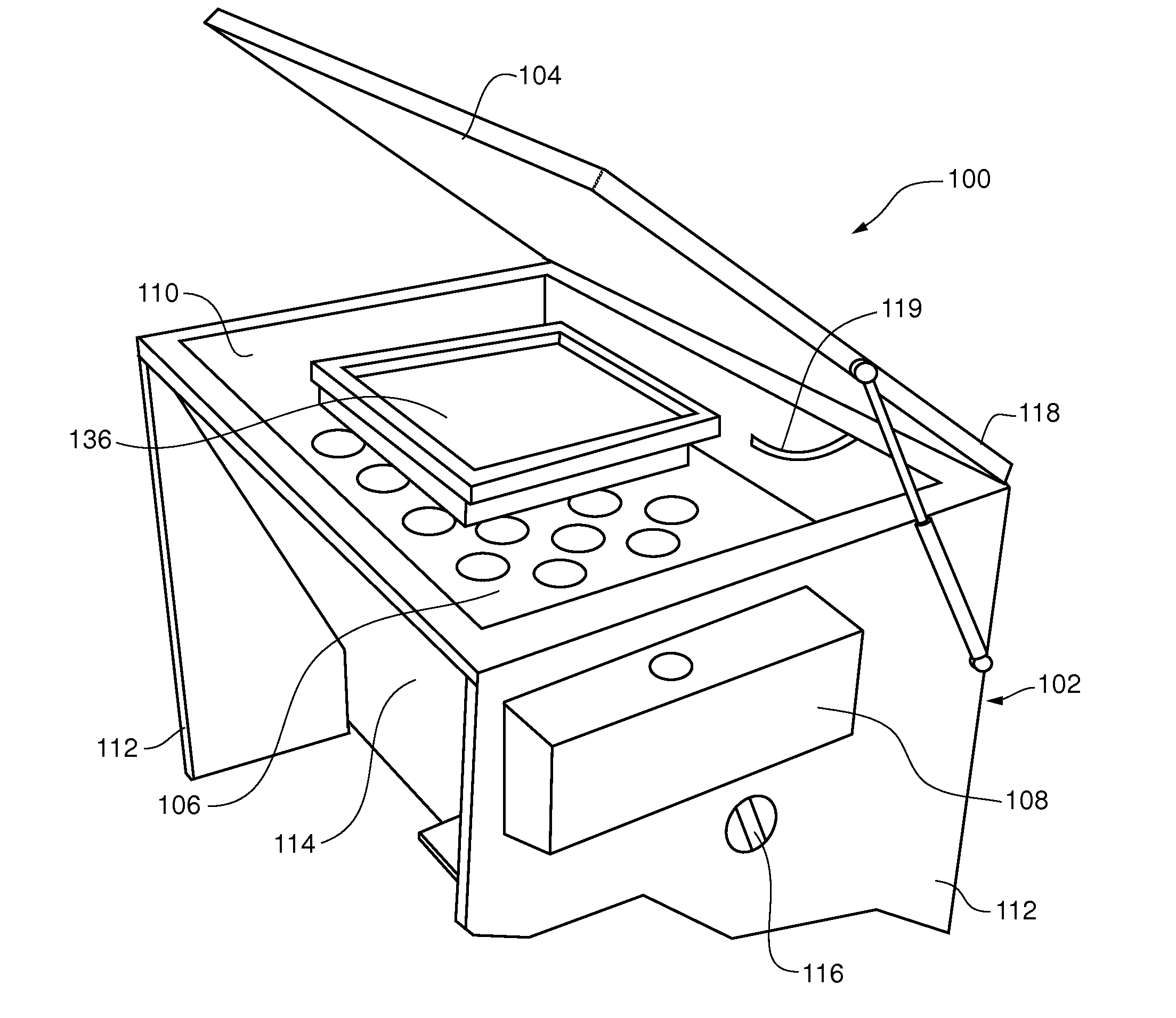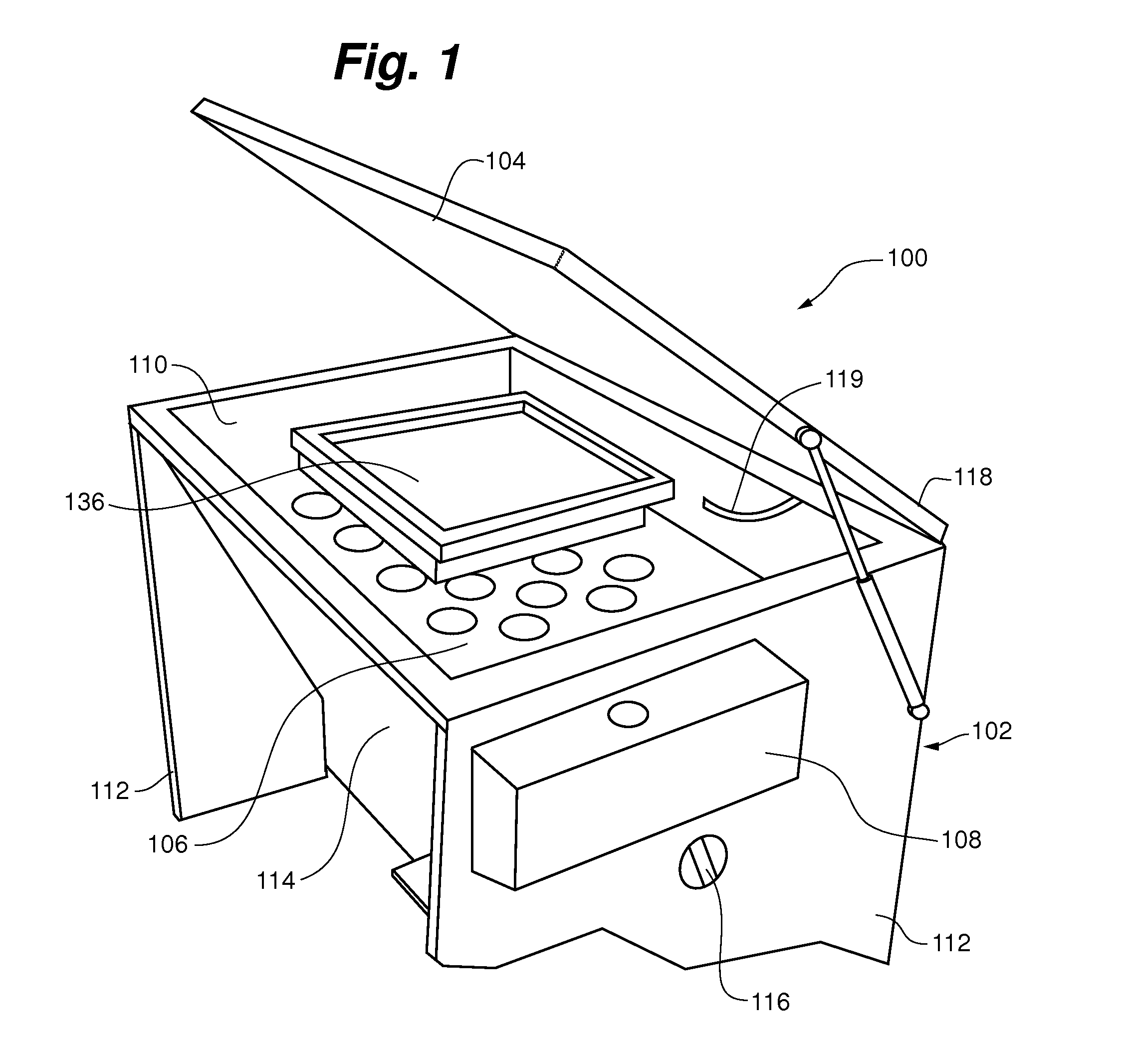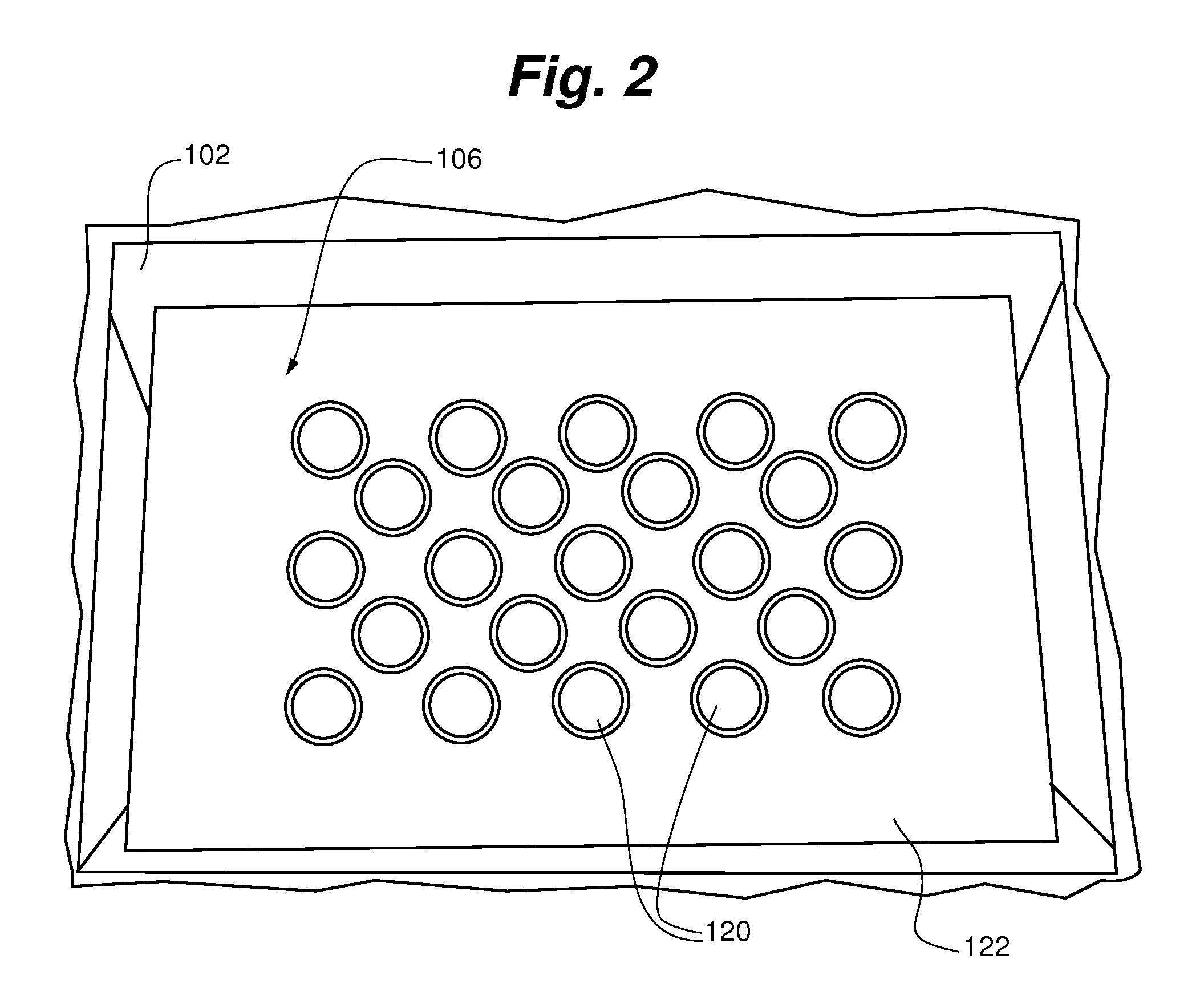Energy efficient multi-spectrum screen exposure system
a multi-spectrum, exposure system technology, applied in the direction of coatings, radiation therapy, nuclear engineering, etc., can solve the problems of large amount of waste heat which must be dissipated, metal halide lamps also produce a great deal of waste light, and metal halide lamps produce large amounts of waste heat. , to achieve the effect of less heat, less cooling, and more accurate exposure times of emulsions
- Summary
- Abstract
- Description
- Claims
- Application Information
AI Technical Summary
Benefits of technology
Problems solved by technology
Method used
Image
Examples
Embodiment Construction
[0023]Referring now to the drawings and illustrative embodiments depicted therein, a multi-spectrum screen exposure system 100 generally includes an enclosure 102, a cover 104, a light emitting diode (LED) illumination light source assembly 106, and a control unit 108.
[0024]As best seen in FIG. 1, enclosure 102 includes a platen 110 on which materials to be irradiated are placed. Platen 110 according to an example embodiment of the present invention is a flat supporting surface made of glass or polymer material, and is at least transparent, transmissive or translucent to some ultraviolet wavelengths of light. In particular, platen 110 is transparent, transmissive or translucent to the particular wavelengths of electromagnetic radiation necessary to cross-link the polymers in the material to be irradiated, for example, in curing emulsions on screens and other substrates. The platen according to the present invention is generally conventional in this regard and need not be further des...
PUM
| Property | Measurement | Unit |
|---|---|---|
| wavelengths | aaaaa | aaaaa |
| wavelength | aaaaa | aaaaa |
| wavelength | aaaaa | aaaaa |
Abstract
Description
Claims
Application Information
 Login to View More
Login to View More - R&D
- Intellectual Property
- Life Sciences
- Materials
- Tech Scout
- Unparalleled Data Quality
- Higher Quality Content
- 60% Fewer Hallucinations
Browse by: Latest US Patents, China's latest patents, Technical Efficacy Thesaurus, Application Domain, Technology Topic, Popular Technical Reports.
© 2025 PatSnap. All rights reserved.Legal|Privacy policy|Modern Slavery Act Transparency Statement|Sitemap|About US| Contact US: help@patsnap.com



